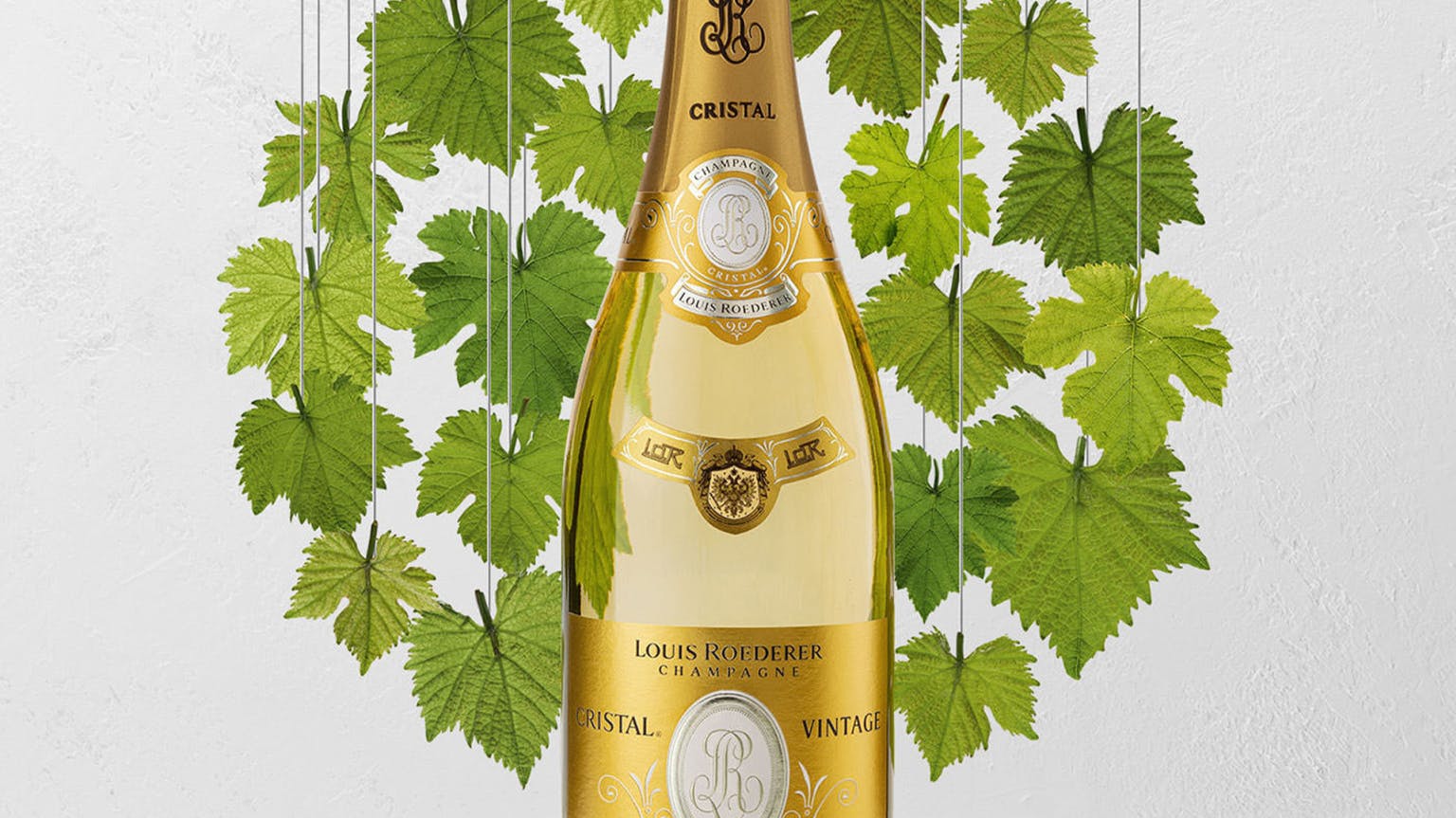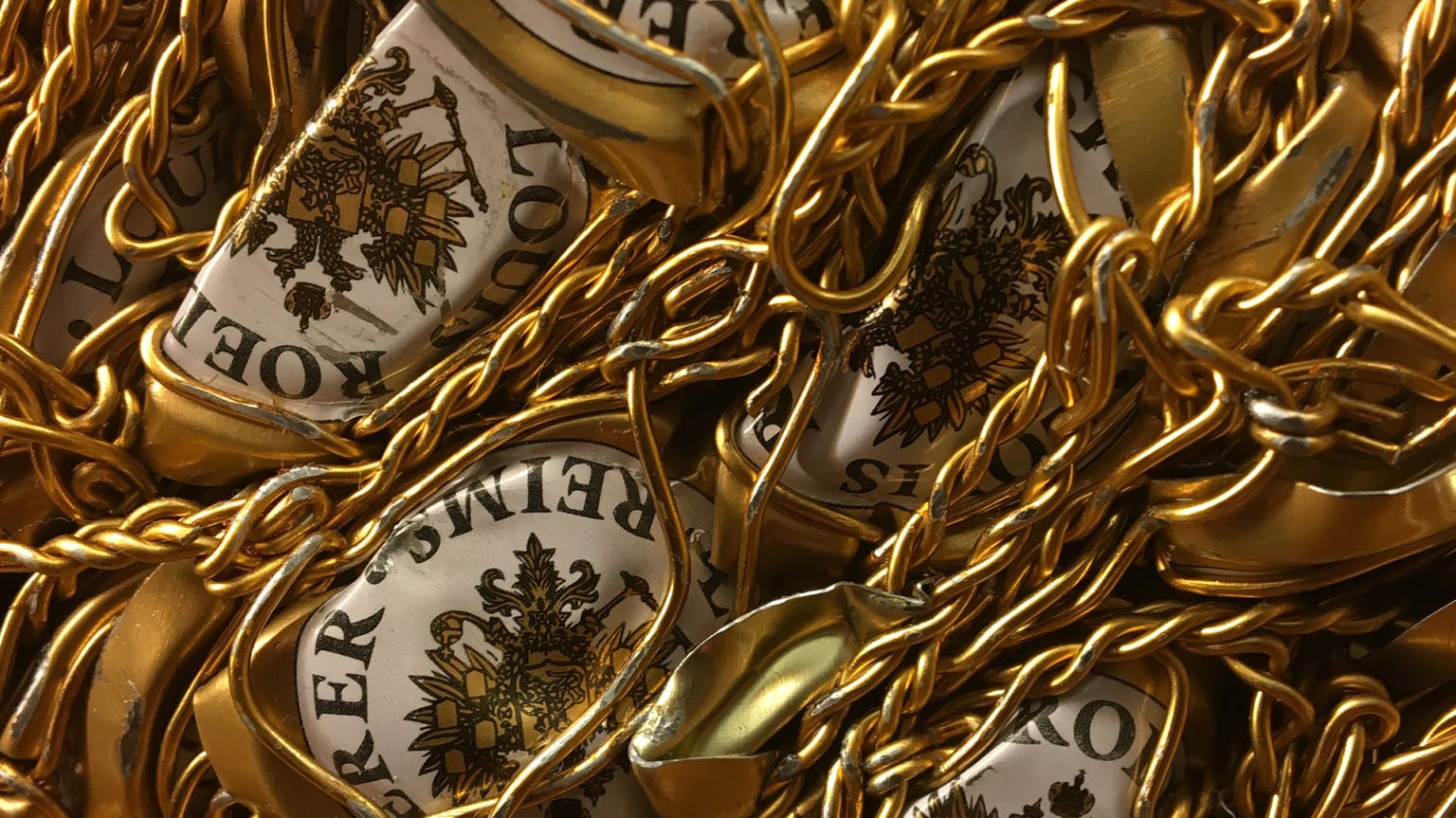What is Cristal – and who makes it?
The Grande Marque Champagne Louis Roederer produces Cristal. Founded in 1833, Roederer is the largest independent, family-owned Champagne house today. Cristal is their prestige cuvée – the very best wine they produce, only made in the finest years. Always a vintage wine, it's a blend of Pinot Noir and Chardonnay. The current Chef de Cave (and Executive Vice-President) at the house is Jean-Baptiste Lécaillon, who is responsible for the entire Louis Roederer range.
When was Cristal first made?
The wine is considered the first and original “prestige cuvée”. It was first made for Tsar Alexander II in 1876, after he asked Louis Roederer to reserve the house’s best wine for him and his court. At the time, Roederer was one of the few house’s to own its own vineyards (a legacy that continues today). A gold capsule and label was used to indicate that the wine was the best in the range, as was common at the time.
Reportedly, the Tsar lived in fear of assassination – and as such requested that the wine be bottled in clear glass, so that he could see if it had been poisoned, and with a flat bottom so that bombs couldn’t be contained in the punt (the traditional indent in the base of Champagne bottles). The glass used was lead-crystal – giving the wine its name, “Cristal”.
When the Russian Revolution took place in 1917 and the Tsars were no more, Roederer continued to make the wine – releasing it commercially for the first time in 1945.
Although the wine would originally have been sweet, the dry style of Champagne gradually became more popular (made initially for the English market) and Cristal evolved with the fashion.
Today it is one of the most sought-after Champagnes in the world, alongside other prestige cuvées such as Taittinger’s Comtes de Champagne, Dom Pérignon, Krug, Pol Roger’s Sir Winston Churchill, Veuve Clicquot’s La Grande Dame and Bollinger’s Grande Année.
How is Cristal made?
Until 1999, Cristal was blended solely on taste. Different parcels from Roederer’s estate vineyards were tasted blind and the best-possible wine created. From 1999 onwards, however, Jean-Baptiste Lécaillon took over and started using the same 45 plots, all mid-slope with chalky soils across seven different Grands Crus. These plots have all been farmed biodynamically since 2012. Only fruit from vines more than 20 years old is used for the prestige cuvée, with any younger-vine fruit declassified to the Collection bottlings (the estate’s vintage, Blanc de Blancs and rosé wines all come from specific vineyards).
Typically, it’s a blend of around 40% Chardonnay and 60% Pinot Noir. The base wines are mainly fermented in stainless steel, with a proportion in oak. The wine undergoes secondary fermentation and is aged on lees for a minimum six years, then aged for at least eight months after disgorgement prior to release. With climate change and general trend in Champagne, the dosage has been reduced – from 12-13 to around 8g/l today.
The final blend is still blind-tasted by the family to ensure the wine is up to scratch. Around 300 to 400,000 bottles are made a year.

What does Cristal taste like?
Cristal is an incredible Champagne – and one of the most age-worthy. With vibrant acidity and refined minerality, it is a linear and precise style of Champagne that rewards time in bottle. Complex, expressive and aromatic, critics have awarded the wine multiple 100-point scores over the years – notably the 2002 and 2008 vintages.
To further emphasise its ageability, in 2017 Louis Roederer released the first of a new series of Vinothèque bottlings – aged both longer on lees and then for a further 10 years on cork. The first Vinothèque wines were from the 1995 vintage, but wines from 1996, 1997, 1999 and 2000 have since also been released. These are available in extremely limited volumes, but offer a taste of the wines with maturity. They tend to have a slightly lower dosage than the earlier-released wines.
Is Cristal rosé?
Yes and no. The original prestige cuvée is a white wine, however a rosé sibling was introduced with the 1974 vintage.The wine celebrates old-vine Pinot Noir from Grand Cru vineyards in Aÿ. The vineyards for the rosé are also farmed organically. Typically a blend of 55% Pinot Noir and 45% Chardonnay, with 20% of the base wine aged in oak, Cristal Rosé is made using the saignée method – pressing the grapes to extract colour (rather than blending in still red wine). The wine is aged on average for six years on lees prior to release.
Why is Cristal wrapped in plastic?
The trademark gold cellophane wrapper is to protect the wine from UV light. As the wine is bottled in clear glass, UV light can cause “light strike” – a fault that causes cabbage or rotten-egg aromas in the wine. As such, the plastic should be kept on the wine until it is served.
Cristal’s street cred and controversy
Cristal was once the choice of hip-hop’s most famous names. “Cristal forever/Play the crib when it’s mink weather,” raps the Notorious B.I.G. on Jay-Z’s Brooklyn’s Finest. Raekwon, 50 Cent, Big L and many more were all fans. Tupac even created a cocktail with Cristal called “Thug Passion”, a combination of Cristal and Alizé Gold Passion liqueur.
In 2006, however, Frédéric Rouzaud – seventh-generation of the Roederer family and CEO – was asked in an interview about the wine’s association with a “bling” lifestyle. In response he said, “What can we do? We can’t forbid people from buying it. I’m sure Dom Pérignon or Krug would be delighted to have their business.”
Jay-Z responded: “It has come to my attention that the managing director of Cristal, Frédéric Rouzaud, views the ‘hip-hop’ culture as ‘unwelcome attention’. I view his comments as racist and will no longer support any of his products through any of my various brands, including the 40/40 Club, nor in my personal life.” Others followed, and soon Cristal was replaced by other wines and spirits. Jay-Z’s own brand of Champagne, Armand de Brignac, was launched later that year – thought partly to be a retaliation.

